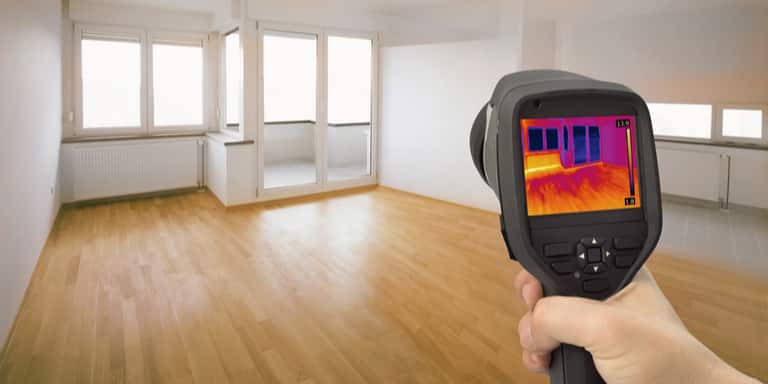12/11/2020
How can we ensure the thermal insulation of roofs?
Avoid overheating of the roof by choosing the appropriate thermal insulation
The introduction to this article will be brief and concise. Choosing the right thermal insulation for your roof will prevent overheating. Avoiding overheating extends the life of the materials used in the construction of the building and also minimises the use of appliances such as air conditioning. All of the above means a saving of both money and energy, in addition to greater comfort for the people living in the building.
Have we convinced you yet? If not, then keep reading. We have many more good things to tell you about the thermal insulation of your roof.
Why is it necessary to keep the roof cool?
The answer to this question is quite simple: because the heat inside the building would be much greater. We could get all technical and explain that roofs are top closure structures that protect the building from weathering. But it is much more clarifying to say that they are literally the roof under which we live. They ensure that the only ice in our house when there are hailstones outside is in our freezer or that on the hottest day of the year the only thing that is roasting is the chicken in the oven.
Because of their position, it is inevitable that they will directly face the sun’s rays. Something which is positive if the roof has solar panels or photovoltaic installations. But if the roof is not able to transform heat into energy, high temperatures and ultraviolet radiation cause more disadvantages than advantages. Roofs wear out sooner, can cause leaks and its useful life – which is usually about 10 to 15 years – is affected.
That is why it is important that they have good insulating properties: to take care of ourselves, our pockets and the environment. Yes, the environment. Because the less heat that passes through the roofs to the interior, the less we will suffer from heat and the temperature will be more pleasant. This means that the use of appliances such as air conditioning will be lower and, therefore, less energy will be used.
How is roof temperature controlled?
A material is a good insulator when it is resistant to the passage of cold and heat. What makes a roof a roof? Factors such as colour and texture. And no, we’re not talking about it being soft and pretty. We’re talking about its reflectance – its ability to reflect the sun’s rays – and its emissivity – its ability to dispel heat. What does this mean? The clearer the colour of the roof and the more irregular the texture, the greater its ability to prevent overheating.
One of the most effective solutions for the thermal insulation of roofs is the COOL-R coating. This is a highly reflective waterproof membrane (reflecting 85% of the sun’s rays) with a high emissivity. Properties that, as we have already explained, lead to the roof being kept at a low temperature. In addition, although it is a thin material, it is also effective against rain.
It is a flexible coating which is resistant to tears and fire.. Features that lead to its durability as the probability of being damaged during installation or maintenance is much lower.
Benefits of the COOL-R coating for the thermal insulation of roofs
The COOL-R coating ensures the roof maintains a stable temperature, reducing the thermal gradient, which contributes to the improvement of the thermal state of the entire building and, consequently, to greater care for the environment.
According to tests carried out by Selena, and confirmed in multiple construction works, it has been verified that the temperature in the area protected with the COOL-R coating was lower, during the spring and summer seasons. During the day it could vary between 14 and 30°C. For its part, in the same period of time, the temperature in the unprotected area increased to 76°C in the most unfavourable cases (asphalt fabric).
Regarding the general temperature inside the building, the more heat inside a room, the more you need to spend on air conditioning. Therefore, applying COOL-R can significantly reduce the temperature of the rooms under the roof, which in turn reduces the increase in heat of the building in general.
The factors that influence the reduction of indoor temperature range from the type of roof or insulation, to the geographical area or orientation of the building. It has been possible to reduce the internal temperature of an industrial building by up to 10ºC, with the average being 4-5°C.
Protecting a building from heat and other climatic agents such as rain is necessary to ensure its durability and sustainability. COOL-R is the most complete solution for roof insulation. Not only because of its insulating qualities, but also because it takes care of the environment.





